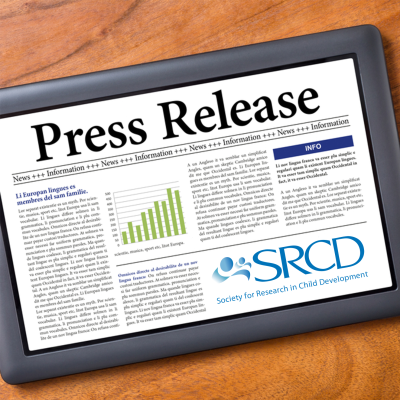Toddlers Whose Parents Use Subsidies to Buy Center-Based Care More Likely to Enroll in Head Start, PreK
PRESS RELEASE / CHILD DEVELOPMENT: Embargoed for Release on June 12, 2014
Children of parents who use subsidies to purchase center-based care in the toddler years are more likely to be enrolled in Head Start or public prekindergarten in their preschool years, according to a new study. The research, conducted at Georgetown University and Columbia University, appears in the journal Child Development.
The federally funded child care subsidy program—the Child Care and Development Fund (CCDF)—serves nearly 2 million children a month and is one of the government’s biggest investments in the early care and education of low-income children. While the CCDF program has come to focus increasingly on quality, CCDF-funded child care settings may or may not have an explicit educational focus. In contrast, Head Start and public prekindergarten programs consistently aim to provide educational experiences for young children (along with comprehensive services in Head Start). However, Head Start and public prekindergarten are not available to toddlers, and the version of Head Start that is available to infants and toddlers, Early Head Start, is a much smaller program. While it is expanding, it currently serves only a small proportion of low-income infants and toddlers.
In this study, researchers asked whether receiving a CCDF subsidy at a younger age—when children were 2, a time when other publicly funded early education options are less widely available— might increase the likelihood of children participating in Head Start or public prekindergarten in the preschool year when these programs do become available.
Using nationally representative data on approximately 2,100 children whose families were eligible for subsidies, the researchers explored whether children who received subsidies at age 2 were more or less likely to use Head Start or public prekindergarten two years later, when they were in preschool. They compared these children to children who were eligible for but did not use subsidies at age 2, and instead used unsubsidized nonparental care. Compared to children who used unsubsidized care at age 2, children whose parents used subsidies when the children were 2 were more likely to use Head Start or public prekindergarten when the children were 4, but only if those subsidies were used to purchase care in a center.
“Our study highlights a previously unconsidered benefit of the subsidy program,” according to Anna D. Johnson, assistant professor of psychology at Georgetown University, who led the study. “If subsidies at an earlier age, when Head Start and public prekindergarten are not yet widely available, help move children into those programs when children become age-eligible, then subsidies may provide another avenue through which policy can strengthen the early development of low-income children.
The research was supported by the Eunice Kennedy Shriver National Institute of Child Health and Human Development at the National Institutes of Health.
###
Summarized from Child Development, Child Care Subsidies and Child Care Choices Over Time by Johnson, AD (Georgetown University), Martin, A (Columbia University), and Ryan, RM (Georgetown University). Copyright 2014 The Society for Research in Child Development, Inc. All rights reserved.


